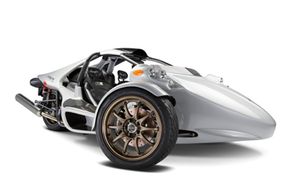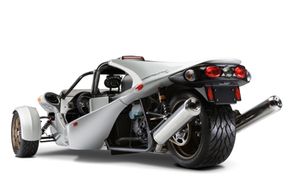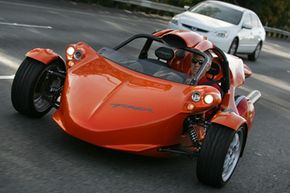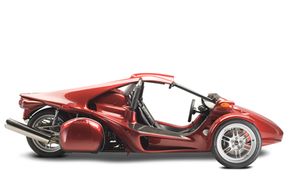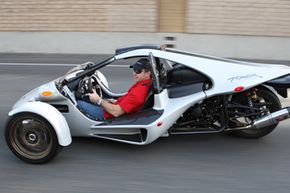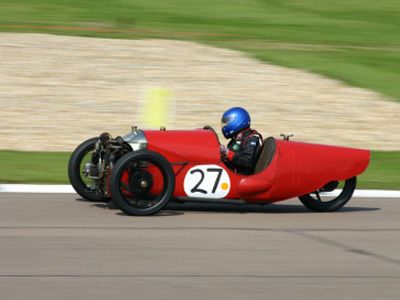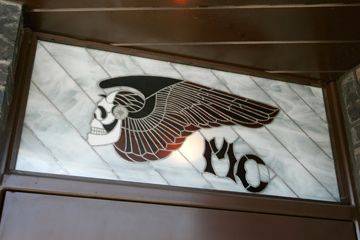Picture this: You're blasting down your favorite back road on a clear, sunny day. The wind rushes against your helmet. You see a corner up ahead. You grip the steering wheel tight, pull a heel-and-toe downshift, and guide around the turn with the front tires as your back tire screeches against the pavement.
At this point, you may be saying: "Wait a minute. Helmet? Steering wheel? Back tire? Just what the heck am I driving in this fantasy -- a car or a motorcycle?"
Advertisement
Well, imagine a high-performance vehicle that combines the attributes of both to create one unusual -- and somewhat scary -- machine. That would be the T-Rex, a three-wheel, motorcycle-based speedster from Campagna Motors, a Canadian company. You read that right -- three wheels; two up front and one in the back.
The T-Rex sits mere inches from the ground, has no doors, an open cockpit, two seats and goes without the usual amenities like power steering and power brakes. It blurs the line between car and motorcycle and it's incredibly fast, too. But it handles in a way cars can't and offers stability that bikes can't either. It's a thrill to drive.
Those thrills have their tradeoffs, however. First, keeping the powerful T-Rex under control will take every ounce of skill you've got. And it's much more expensive than most motorcycles and even some sports cars, too. But some say you can't put a price tag on the unique rush the T-Rex offers.
In this article, we'll discuss how the Campagna Motors T-Rex works, inside and out. We'll leave it up to you to decide if the excitement is worth its cost -- and whether or not you can handle it.
Advertisement
